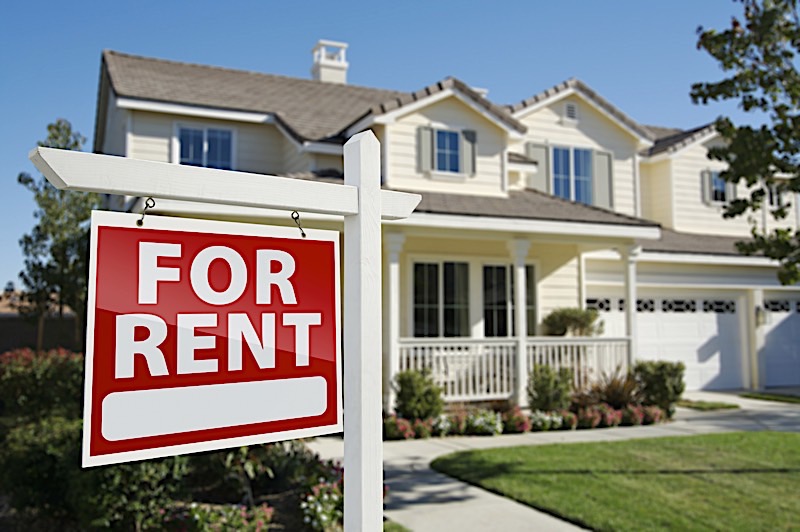Passive Income Goals: Start Saving For Retirement In 2017
By Than Merrill
Have you set any passive income goals for the coming year? Don’t worry, it’s not too late if you haven’t initiated a self-directed retirement plan. It’s worth noting, however, that the sooner you get started, the better.
Ask anyone what your passive income goals for retirement should be and chances are you will be made privy to a litany of things you already know: Open a 401(k), take advantage of compound interest platforms, and automate your savings. And while each of these suggestions is a great place to start, they are by no means the be-all-end-all. These particular practices aren’t meant to be utilized in and of themselves, but rather as a compliment to subsequent passive income goals. While a 401(k) — and even a savings account with compound interest — is fully capable of helping you save for retirement, it is no match for what I consider to be the greatest retirement vehicle of them all: passive income real estate.
Have you set any passive income goals for yourself to meet in 2017?
As Investopedia so eloquently puts it, passive income represents the “earnings an individual derives from a rental property, limited partnership or other enterprise in which he or she is not materially involved.” If for nothing else, passive income is just that: passive. “It’s been used to define money being earned regularly with little or no effort on the part of the person who’s receiving it.” What’s not to like? All things considered, few investment vehicles can eclipse the prospects offered by properly acquired rental properties with the ability to bring in predictable income.
Passive income real estate has become the cornerstone of today’s most prolific retirement portfolios, and for good reason. No other strategy, as far as I am concerned, is capable of facilitating the retirement you have always dreamed of than acquiring a portfolio of passive income properties. And the name says it all. By the time you retire, the last thing you want to do is work hard for your money. All things considered, the deck is already stacked against those that have neglected to save for retirement. Why make retiring more difficult than it already is?
According to the Motley Fool, “you’ll need $1,060,751 in savings if you expect to draw $5,000 per month for 30 years, assuming 6% annual investment returns and 2% inflation.” If that wasn’t hard enough to comprehend, consider this: the average 50 year old has managed to save approximately $42,797 (nowhere near the recommended retirement number).
I maintain that there is a serious retirement problem in the United States, and financial experts at the Motley Fool share my sentiment. According to Matthew Frankel, “80% of Americans between the ages of 30 and 54 believe they will not have enough saved for retirement.” It’s worth noting, however, that it’s never too late to do something about it. And while it’s better to start saving for retirement earlier, there is no reason you can’t start right now. No matter where you are at in life, there is no reason you can’t set some passive income goals of your own.
Regardless of your age or financial situation, it’s never too late or too early to start preparing for retirement, which begs the question: What’s the best way to start saving for retirement right now?
The answer is simple, and more resounding than you could have ever imagined: passive income real estate. With the right portfolio under your belt, it’s entirely possible to retire comfortably without having to worry about where your next paycheck will come from. What’s more, passive income retirement strategies have an inherent advantage over traditional retirement savings methods: accumulated capital is in no way limited, but rather compounded over time with each additional asset. A nest egg, on the other hand, has a finite amount of savings to tap into.
Reasonable Passive Income Goals To Set In 2017

Instead of limiting your retirement potential, I recommend increasing it exponentially through passive income real estate. To get started, first identify how much you might need to retire comfortably. A great place to start is by looking at how much you currently make. General consensus suggests that the average person should be able to retire on approximately 80% of their current salary, provided they are already living comfortably. Therefore, it’s reasonable to suspect an individual making $100,000 a year could retire comfortably on a plan that would provide $80,000 a year.
It’s worth noting that not everyone’s number will be the same; some will be significantly more or less than your own. The key is to identify a number that you would be comfortable living on today, and using 80 percent of it to identify the number you should retire with in the future. Once you have that number, it’s entirely possible to identify reasonable passive income goals.
Take your retirement number and find out how many rental properties you will need to supplement it with; don’t worry, ApartmentList has already done most of the heavy lifting for us. Thanks to rental data collected by apartment information hub, we can identify how many passive income rental properties one would need to meet their retirement number. “National median rent prices for November came in at $1,100 for a 1-bedroom and $1,260 for a 2-bedroom,” said the company’s latest National Rent Report.
While the numbers released by ApartmentList represent an average, it’s worth noting that certain cities will exhibit vastly different prices. Gateway cities like New York and San Francisco will have much larger average rents than the likes of Boise, ID. Take this into account when trying to identify your own number.
But let’s say you decided to build a passive income portfolio based solely on 2-bedroom apartments. If you want to supplement an $80,000 annual salary with 2-bedroom apartments (which bring in an average of $1,260 a month), all you have to do is make a few simple calculations. At their current going rate, you would need about six rental properties (each bringing in $1,260 a month) to make an annual salary somewhere in the neighborhood of $80,000.
It’s worth noting that the money you receive from renting said properties to tenants will go towards paying down the mortgage of the respective property. And while you do stand to make money while still paying down the mortgage, the real advantage comes after the mortgage is paid off. Once you are free and clear of any mortgage obligations, you are free to collect all the money you receive from your tenants.
It’s entirely possible for those that start early enough to have a portfolio of rental properties in which all of the mortgages are paid in full (by the tenants, might I add). Those that get a later start can take advantage of the profits they make off of tenants each month. And while said profits won’t be as high with a mortgage obligation looming around the corner, it’s possible to make them passive with the assistance of a property manager. That means you can add more properties to your portfolio to offset the mortgage issue.
No matter where you are at in life, a passive income real estate portfolio can benefit anyone looking to retire. While your age will dictate your particular strategy, there is an option for everyone. Don’t miss out on this opportunity of a lifetime; set your passive income goals today and be prepared for what comes in the future.